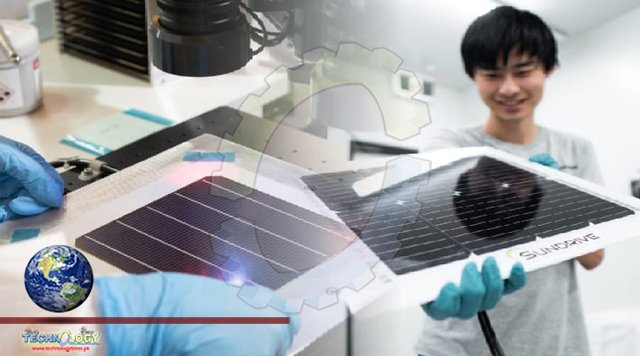Australian solar technology company SunDrive continues to impress with its copper-based solar cell technology, achieving 26.41% efficiency for a full-size silicon cell using mass-production compatible heterojunction technology.

SunDrive has achieved an efficiency result of 26.41% on a full-size silicon heterojunction (HJT) solar cell featuring the company’s copper-based technology using large-scale production processes provided by China-headquartered equipment manufacturer Maxwell Technologies. Sydney-based SunDrive said the result, which improves upon the 26.07% efficiency mark the company announced earlier this year, has been officially verified by the Institute for Solar Energy Research in Hamelin (ISFH) in Germany. The company said improvement of the HJT cell, with a total area of 274.3cm2 (M6 size), had been observed in all three key performance parameters including open-circuit voltage (Voc), short circuit current (Isc) and fill factor (FF), attributing the improvements to “several equipment and processing upgrades”. SunDrive said Maxwell’s latest generation chemical vapor deposition (CVD) equipment incorporates bifacial microcrystalline silicon layer deposition, further improving the rear-side passivation and contact resistance. In addition, more transparent conductive oxide (TCO) layers were applied using Maxwell’s latest physical vapor deposition (PVD) coating equipment.
SunDrive said fabricating the solar cell electrodes using the company’s copper plating technology rather than traditional silver screen printing had also played a key role in the efficiency improvements. SunDrive, which replaces the silver used in conventional in solar cells with the cheaper and more abundant copper, said it has refined its copper plating chemistry and processing sequence, achieving feature sizes of less than 10 µm with an aspect ratio close to one.What we have shown is that copper can effectively take silver’s place on these next-generation solar cell structures, but more importantly, efficiencies can be further increased beyond levels attainable with silver,” the company said. With solar PV set to play a major role in the world’s transition to a clean energy future, SunDrive co-founder Vince Allen said copper is the key to unlocking the floodgates of more efficient solar cell structures and its use in place of silver could allow solar technology to reach its full potential. “The solar cells that will provide the majority of the world’s future energy needs will be vastly different to the solar cells we have today,” he said. “Efficiency, cost and material scalability are fundamental for continued growth in solar adoption. “Copper is around 100 times cheaper per kilogram and around 1,000 times more abundant than silver. And aside from the abundancy and cost benefits of copper, we have found we can improve the efficiency above and beyond what is attainable with silver.”
Source: This news is originally published by pv-magazine-australia